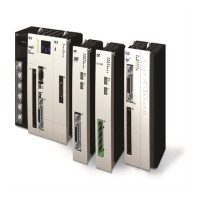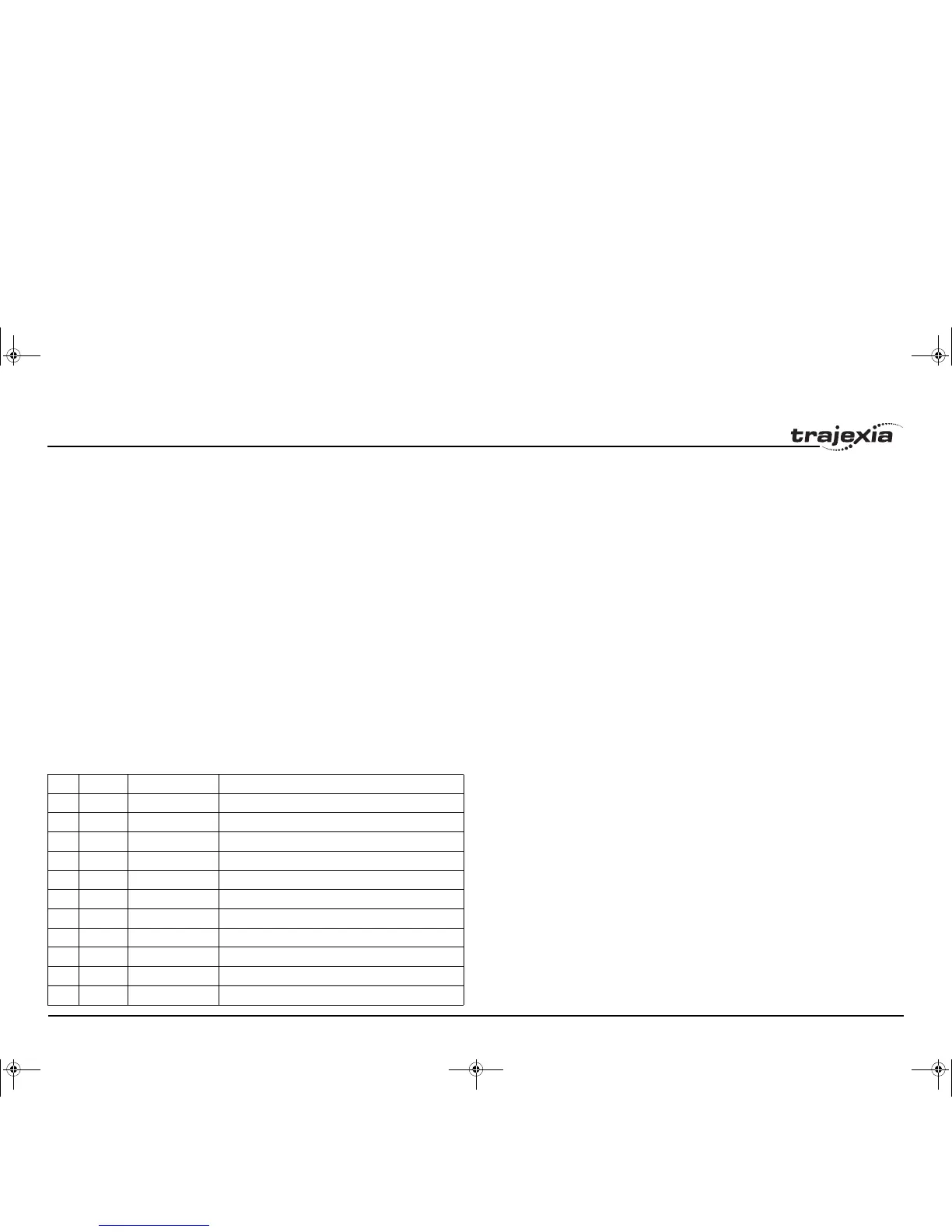BASIC commands
PROGRAMMING MANUAL 102
Revision 3.0
/i
3.2.160 INVERTER_WRITE
/i
Arguments • module
The number of the TJ1-ML__ that the inverter is connected to.
• station
The MECHATROLINK-II station number of the inverter.
• param_number
The number of the parameter to read. See the inverter manual.
• param_size
The size of the parameter to read, 2 or 4 bytes. See the inverter manual.
• VR
The address in the VR memory of the TJ-MC__ where the read informa-
tion is put. When the function is 4, the result is returned as a bitwise
value. See the table below.
• alarm_number
The number of the alarm to read. See the inverter manual.
• from
The start address of the input to read.
• length
The length of the input to read.
Example No example.
See also N/A
Bit Value Command Description
0 Hex 1 Run forward
1 Hex 2 Run reverse
2 Hex 4 Inverter multifunction Input 3
3 Hex 8 Inverter multifunction Input 4
4 Hex 10 Inverter multifunction Input 5
5 Hex 20 Inverter multifunction Input 6
6 Hex 40 Inverter multifunction Input 7
8 Hex 100 External fault
9 Hex 200 Fault reset
14 Hex 4000 Fault history data clear
15 Hex 8000 External BB command
Type System command
Syntax INVERTER_WRITE(module, station, 0, param_number, param_size, VR,
mode)
INVERTER_WRITE(module, station, 2, value)
INVERTER_WRITE(module, station, 3, value)
Description INVERTER_WRITE writes the parameter, speed reference or torque refer-
ence from the frequency inverter connected to the system via the MECHA-
TROLINK-II bus.
There are three INVERTER_WRITE functions:
• 0: Writes an inverter parameter.
• 2: Writes the speed reference.
• 3: Writes the torque reference.
To use an inverter via MECHATROLINK-II you should put the command and
the reference via communication option:
• Inverter MV/V7: N3=3; N4=9
• Inverter F7/G7: B1-01=3; B1-02=3.
Make you sure that the Inverter firmware supports the MECHATROLINK-II
board.
The command returns -1 if successfully executed and 0 if failed. The result (if
any) is returned in the selected VR.
I52E-EN-03.book Seite 102 Freitag, 29. Juni 2007 11:55 11

